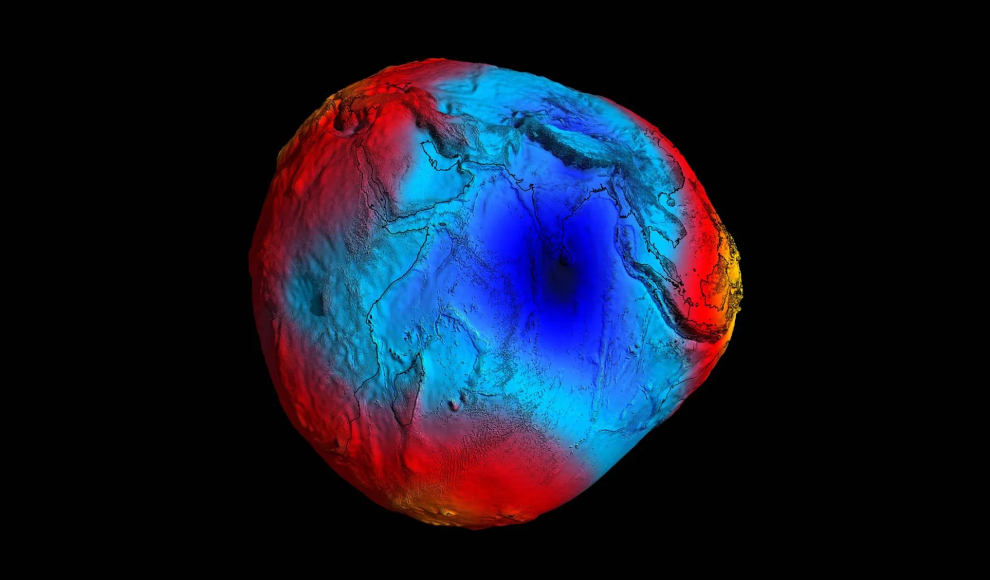The Indian Ocean is home to the lowest gravity on Earth, and scientists have finally discovered the cause of this gravitational anomaly. The Earth is not a perfect sphere, as it is wider at the equator due to the strong centrifugal force. Additionally, the mass inside the planet is not evenly distributed, resulting in varying gravitational forces across different regions. These areas with particularly low gravity are known as gravitational lows. The gravity of different regions was determined using the GRACE double satellites, which orbited the Earth from 2002 to 2017.
Researchers from the Indian Institute of Science (IISc) have now discovered the cause of the gravitational low in the Indian Ocean. According to their publication in the Geophysical Research Letters, the geoid is a result of magma flows with low density. The study’s authors, Debanjan Pal and Attreyee Ghosh, reconstructed the tectonic plate movements of the Earth and the resulting rise and fall of material in the mantle. The model data showed that an old oceanic plate that had sunk under the African continent led to the rise of hot magma flows with low density. The magma then collected in the region of the “Indian Ocean Geoid Low” south of India, causing the point with the lowest gravity on Earth.
Accurate knowledge of the Earth’s geoid is crucial for both scientific and everyday scenarios. It is essential for the correct determination of height using the Global Positioning System (GPS). Without geoid data, a GPS receiver on a ship would display differences in height, even though the ship is continuously at sea level. This is because older GPS satellites that orbit the Earth’s center calculate height only in relation to an elliptical model of the Earth. To compensate for this inaccuracy, modern GPS receivers integrate a special grid into their software to determine the exact height from the receiver’s current position. A precise model of the Earth’s geoid is also necessary for accurate measurements of ocean circulation, sea level changes, and the dynamics of ice movements on our planet.
In conclusion, the discovery of the cause of the gravitational low in the Indian Ocean is a significant breakthrough in the field of geology. It provides valuable insights into the Earth’s internal structure and helps us better understand the forces that shape our planet.










